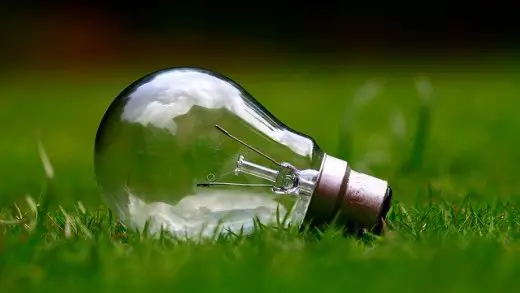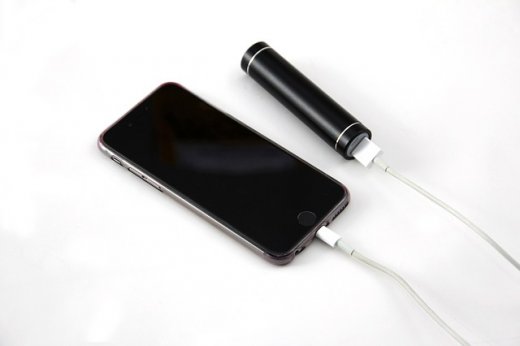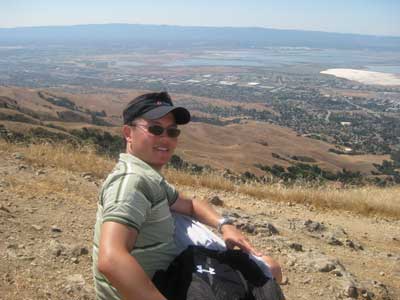
Electricity has become an indispensable resource for our daily survival. Even when we leave the comfort of our homes and seek to connect with nature, we won’t head to our camping destination until we know how to get electricity while camping.
According to the 2017 American Camper Report, electricity listed third among the top ten luxury camping items after air conditioning/heating and TV/electronics. It’s essential if you want to retain an ounce of modern comfort, so you can’t go without it unless you’re really looking to rough it.
This comprehensive guide will cover everything you need to know about how to get electricity while camping.
What to Consider Before Purchasing a Source of Electricity for Your Camping

Bearing in mind your electricity needs and meeting them with the corresponding source of power is crucial to the success of your camping experience.
Several factors should inform your choice of electricity source while camping.
How much electricity you need
Having an idea of how much electricity you’ll need and for how long is key.
Check your camping kit to see the gadgets and appliances that will require charging or powering to run and estimate how much power each will need.
For example, bringing a small heater will mean using around 1,500 watts when it is on while a mini-fridge will consume around 85-100 watts. If you are bringing both, you will need a power source with high wattage.
Also, if you are staying on camp for an entire week, you will need a lot more power than if you only did two nights.
Weight and Size
Heavier and larger electricity sources will have more wattage.
Again, the number of days and the type of gadgets and appliances are a factor to be borne in mind. Buying a large and heavy power pack may mean you are camping for a week or two and also bringing along high wattage appliances.
A night or two only needs a lightweight electricity source for your essential gadgets and appliances.
Number of people
If you are camping alone, you will consume less electricity than if you go camping the entire family. A power bank may last you a week if you are by yourself, but the same power bank may only serve a family for two days.
A medium wattage power bank is enough for a single camper. A high wattage power bank will be needed if you are bringing the family along.
Budget
How much you are willing to spend on your electricity needs cannot be ignored. If you are on a tight budget, you need to factor that into your choice of electricity. You also need to think about the number of days you will be camping.
It is cheaper to pay a fee for the hook-up power if you choose to go to commercial or club campsites. If you are camping off-grid, hook-up power is not an option, and you will have to evaluate your choice against your budget.
Renewable energy is cheap. But renewable energy generators may not be so cheap. Power packs may be a cheaper option in this case with the possibility of recharging them with solar panels or other green energy options.
Resilience/Durability
No one wants to purchase equipment that only lasts one camping escape. When purchasing an electricity source, get one that you can use the next time you stay outdoors.
Some power sources like generators are more resilient in tough weather conditions, but not so the smaller power packs.
More durable electricity sources may imply digging a little deeper into your pocket, but that also means not having to spend on new equipment in the future.
Features
The features you look for in the power supply device may have to do with the device’s portability and the use of power.
If your electricity need is majorly about recharging electronic gadgets, a power bank with one or two USB ports is good enough. If you need to run bigger appliances, you will need socket plugins.
When your tent is meters away from your car, a power bank with a lifting handle makes it easier for you to bring it to your tent. If this feature is lacking, carrying it becomes altogether cumbersome.
The environment
An eco-friendly power source will point to your sense of responsibility for the environment. Camping off-grid for a month with a gas generator adds significantly to the carbon footprint.
Opting for an electricity source that uses renewable energy such as sunlight, water, and wind works in favor of environmental conservation. You should opt for these if you are camping for a long time.
Now that you know what to consider when buying an electricity source, we can now delve into how to get electricity while camping.
How to Get Electricity While Camping

Three factors categorize the sources of electricity while camping:
- Using sources that charge or recharge from natural or synthetic energy such as gas, sunlight, wind, thermoelectric power or hydro-power.
- Using devices that store charge and are rechargeable when depleted.
- Using devices that provide emergency charge once or several times when other sources are depleted or unavailable.
Following is our comprehensive list of the devices and equipment that give you electricity while camping.
Using an electric hook-up
An electric hook-up is probably the most reliable source of power while camping. It gives a 230V power supply as in a home context. You usually have access to electric hook-ups at clubs and commercial campsites.
The voltage in electric hook-ups may sometimes be lower than usual, requiring you to watch the voltage level of the appliances that you use. The excess current load can cause electrical tripping when the circuit breaker automatically switches off to pre-empt overheating and damage to appliances.
If you are the culprit behind an electric trip, you risk being labeled the bad guy on camp. You will leave everyone in the cold or darkness before the campsite manager resets the power supply.
Two key choices make the use of electric hook-up a more efficient experience for you and others in the camp:
- Buying an appropriate electric lead for outdoor use. This has a weather-proof plug at one end to connect you to the hook-up mains. The other end has one or more plugins fitted in a water-proof box. Choose an electric lead with an RCD switch to automatically cut of power supply in case of an emergency.
- Passing your electric wire through the cable entry point of your tent (if you have one). This is safer than passing it through the tent entrance where it’s easy to trip.
Source from your car battery
A regular car battery has 12 volts and operates on direct current (DC).
You can tap electricity from your car battery by clamping an inverter onto the battery terminals. The inverter turns the power from the battery into alternating current (AC). AC power is usable with your gadgets and appliances at the appropriate voltage (around 110-120V).
Using a power inverter to source from your car battery is safer both for your battery and for your appliances. The inverter is fitted with regular outlets where you can plug your appliances or an extension electric cable with ports at the end.
With the advancement in technology, inverters are sold with both the wires that you clamp to the terminals and a socket that you can plug directly into the cigarette lighter outlet of the battery.
When purchasing an inverter to source electricity from your car battery, it is important to ensure that it is designed for use with a 12V battery. Otherwise, it will not serve the purpose.
Buying an inverter with both the wire clamps and the socket plug assures you that one will function should the other fail. Besides, you can also use the wire clamps with a spare car battery.
Note that you will need higher voltage inverters for appliances with high wattage. This may include heaters and coolers. The higher the wattage, the faster your car battery gets depleted.
You must bear in mind that when your power source is your car battery, using it for long periods or with high wattage appliances will stall your car. You won’t be able to start it when you need to, which means you might want to consider this next option on how to get electricity when camping.
Opt for an RV battery
Recreational vehicle batteries or deep-cycle batteries have a steady current and are designed to be regularly deeply discharged. Your regular car battery is instead designed to provide a surge of power when igniting a vehicle. An alternator then provides the car with energy once it is on the move.
Because an RV battery is made to charge for long periods, it is a better option compared to your usual car battery, which gets depleted of charge quickly. The thicker plates in an RV battery explain this difference in power.
RV batteries can produce between 30 to 50amp hours. This means they can charge a wide range of electrical appliances. They are easily recharged at a campsite hook-up or using solar panels.
When tapping electricity from an RV battery, use a long heavy-duty electrical wire cord and avoid an extension wire.
To ensure a long life to your RV battery, recharge it every time it is discharged so that it has at least 50% charge consistently.
Bring a portable battery pack
Bringing a compact portable battery pack or power bank to camp will spare your car battery. The advantage is that it’s easily portable, and its 27 Ah (Amp hour) will keep your phone, computer, camera, and other gadgets fully charged for several days.
Higher voltage portable batteries of up to 52Ah can also be purchased to suit your camping electricity needs.
Made of Lithium-ion batteries, most models of the portable battery pack have ordinary USB ports that can charge smaller gadgets. They are also fitted with one or two 120V sockets that allow you to plug in and charge larger appliances. The number of outlets depends on the size and capacity of the power bank.
Compared to generators, portable power banks are less weighty to carry around and don’t make any emissions. They are silent and do not disturb other campers while in use, as is the case with gas-powered generators. They require little maintenance since you only have to recharge them when they are depleted.
Some models of portable power banks come with recharging solar panels. Their wattage capacity, however, requires a long time to recharge fully. Besides, portable power packs can be pricey.
Smaller portable power banks for mobile have today been designed to charge your phone and other small electronics when you are on the go. The portable power banks for mobile are fitted with universal charging ports and are appropriate for phones, tablets, and other small gadgets like GPS.
Portable power banks for mobile have to be recharged from your main power source. But having them while camping frees a few more watts for use with other electricity needs.
Purchase a generator
Generators are a typical alternative of power supply. Portable sizes are available for your camping escape, and you can choose according to your needs.
One drawback with generators is that they can be noisy, disrupting the peace of other campers. Some campsites will set specific times when generators can be used or ban their use altogether. Choose a model that is quiet and certified for use in camping sites.
If generators are allowed at your camping site, you can choose from a few options depending on their capacity and your power needs. Here are some of the available options you can select from.
Gas generators
These are affordable and portable. A gas generator of around 36 pounds can easily be carried around. With a full tank, it will serve your electricity needs for up to 5hours.
Solar generators
These are silent, clean, and easily portable. Using natural sunlight makes them cheaper too. They come in different capacities and sizes.
A solar panel generator of around 220Wh/20,000mAh can charge a wide range of gadgets and appliances, including phones, tablets, computers, small refrigerators, and TVs. All this is possible because they are fitted with inverters with USB and DC outlets, as well as a cigarette socket cable.
The major limitation with solar generators is that they rely solely on sunlight and are useless on a cloudy day.
Pedal generators
This type of generator uses manpower to create a store of energy that can be used later. You need to pedal as with a bike to generate electricity.
Pedal generators may not be your number one option. However, they are handy if you are going to the forest or at campsites where there are no electric hook-ups and gas generators are not allowed.
The greatest drawback with pedal generators is that they are tiring. You would not consider pedaling to generate power after a long day of hiking.
Thermoelectric generators
These are rather primitive but can be a cheaper option when camping off-grid. They work by converting temperature variations into electricity.
For example, you can use a coal fire as the heat source to power the generator. The generator detects the temperature difference created by the coal and converts it into usable electricity.
Some models can produce up to 15 watts of power, while others can charge detachable batteries. Stove-like thermoelectric generators are also available and can be used to cook, aside from producing electricity for other needs.
One drawback with this type of generator is that they are more expensive than the gas option.
Use solar power (Photo-voltaic power)
We’ve already mentioned the use of solar panels to charge generators.
But solar panels can also be used to charge portable battery packs. This allows you to have electricity when the sun is down and on cloudy days
Some solar panels can directly charge certain appliances. You can also charge torches and lanterns and use them when it’s dark. Torches with inbuilt solar chargers are also a good option for use with photo-voltaic power.
This article is owned by Recapture Nature and was first published on March 12, 2020
When purchasing solar panels, you can choose based on size and capacity. Larger solar panels may have greater capacity but can also be cumbersome.
Whereas solar power is free, solar panels can be expensive depending on the quality and the charging capacity that you are looking for. Solar panels are also fragile and need to be handled with care.
You can also tap solar power by buying a solar-powered tent. A detachable flashlight and a series of LED lights are attached below the tents fly (the layer that protects the tent from rain).
These are charged while there is sunlight and can provide lighting for around four hours in the night. You can manually switch on the light when needed or automatically set it to go on when darkness sets in.
Wind/water turbines
Wind or water turbines are another cheap and clean source of electricity when camping. Once you purchase your water/wind turbine system, it is easy to set up, and it requires minimal follow-up.
Wind/water turbines are a cheap and easy to use option when camping off-grid.
You can run a wind/water turbine at any time. If your camp is near a river, the turbine can run 24/7. Wind may not be consistent throughout, but it’s enough to hang your turbine on a tree, and wind propels it to generate power.
If your turbine is in water with 5mph running speed or hangs on a tree while the wind blows at 7mph, you can harvest around 25W. You can charge a generator or recharge a portable battery pack with the water/wind turbine.
One disadvantage with wind/water turbines is that they may require a lot of maintenance. A water turbine may be easily destroyed by an object floating in running water. Extreme winds may also destroy wind turbines. Wind turbines can likewise be a hazard to flying animals.
Electricity-generating wind turbines are also a relatively recent technology, which makes them expensive.
Wood burning electricity generating stove
Though not always considered environmentally friendly, the wood-burning stove can generate electricity. If you are concerned about the legality of using wood to generate electricity, know that the US government considers woody biomass or burning wood to generate electricity carbon neutral.
Contemporary models have an inbuilt power bank that stores watts usable in charging gadgets via USB ports. This means that once charged, the stove can provide electricity even without a live fire. The BioLite stove is a good example.
While this may not be an option at commercial or club campsites, they are a cheap and reliable source of electricity when boondocking in the wild where wood is readily available.
Even though greater precaution is required when generating electricity from a wood-burning stove, they could serve as a heating source when camping is done in the cold season.
Generating power from all these sources makes your camping experience more fulfilling. But it’s important to keep in mind the safety precautions that should accompany the use of electricity.
This article is owned by Recapture Nature and was first published on March 12, 2020
Safety Precautions When Using Electricity While Camping

While electricity is an excellent resource for campers. It can also be a danger if used recklessly. Getting electricity at the campsite goes beyond its use to using it safely.
Each of the modes of getting electricity in camp discussed in this write-up has its safety safeguards. But some general safety precautions should be observed, irrespective of the source of electricity.
- Check your electrical appliances to ensure they are in good condition before bringing them for use at the campsite. If you are buying new ones, insist on a warranty for electrical fitness.
- Bring a fire extinguisher that is suitable for electrical fires in case of emergencies.
- Before turning on appliances, turn on your generator first to avoid damage to the appliances.
- Switch off electrical appliances and electricity sources when not in use, and every time you are out of the tent or away from the campsite.
- Always ensure that your tent and any space where you use electrical appliances or pass electrical wires are dry. Dampness can easily cause electric tripping or create the conditions for electrocution. If your tent gets damp from condensation or water flowing in, switch off and unplug appliances and cover sockets and plugins.
- Switch off power sources and unplug appliances while sleeping in a tent.
- Ensure light fittings are insulated and weather-rated with good protection against damage.
- There are electrical appliances designed for camping with a lower voltage than the ordinary domestic appliances. Opt for these to avoid overloading and consequent damage to the appliance and the power source. For example, a small camping kettle should be used in place of the domestic one.
- Ensure that your socket box is not overloaded by using a single appliance for each socket. Avoid adapters to create multiple plugins in a single socket.
- Do not resolve complex electric mishaps by yourself. Seek the help of an electrician through the campsite management.
- Avoid using extension wires to source power from a neighboring tent. It could cause overloading or create the danger of tripping on the wire for other campers.
- Uncoil your electrical wire completely to avoid overheating when piled up.
- If you plug into the campsite hook-up, inspect first to ensure the socket is in good condition. Report damaged sockets to the management.
- When not in use, store electrical leads tidily rolled to avoid damaging them or causing accidents when campers pump into them.
- If you experience a tingling sensation while handing appliances or have an electric shock, do not continue using the appliance. Report the incidence to the camp management so that the cause can be examined and corrected.
- Smoke or fumes are a sign of overheating or overloading. Safely disconnect the current immediately.
Why Do You Need Electricity When Camping?

Here are your most compelling electricity needs while you pitch a camp:
- Safety is key when camping. Your power supply will keep your GPS working and allow you to make a call in case of an emergency.
- You’ll need lighting for the nights you stay at the campsite.
- Your phone, tablet, computer, and any electrical appliances you bring to camp will need recharging.
- If you are camping for days, eating canned food and cold drinks throughout may not be your best option. You’ll need to cook, warm food, and boil water.
- A small refrigerator to preserve and keep your food cool will require consistent power, especially if you are staying for long.
- If you are camping in a season when nights get extremely cold, heating will require a good source of electricity and so will a fan if you are camping in the hot season.
- You don’t want to be going around with wet hair. Hair dryers/straighteners need electricity to run.
- Should your car ignition fail due to a low-charge battery, a portable power supply will help jumpstart it.
With all these electricity needs, it is important to know what type of power source will meet your needs even before you purchase a new one or pack an old one.
Conclusion
There are multiple options for getting electricity while camping. You just have to choose what works best for your needs.
This article is owned by Recapture Nature and was first published on March 12, 2020
Whichever choice you make, it’s important to ensure that you and everyone around you at the camp are safe. Following the safety precautions is key in ensuring that you reap the benefits of a consistent supply of electricity on camp.

